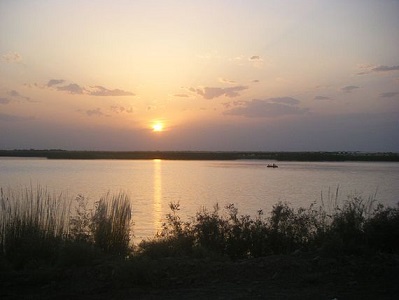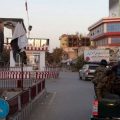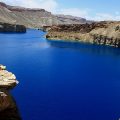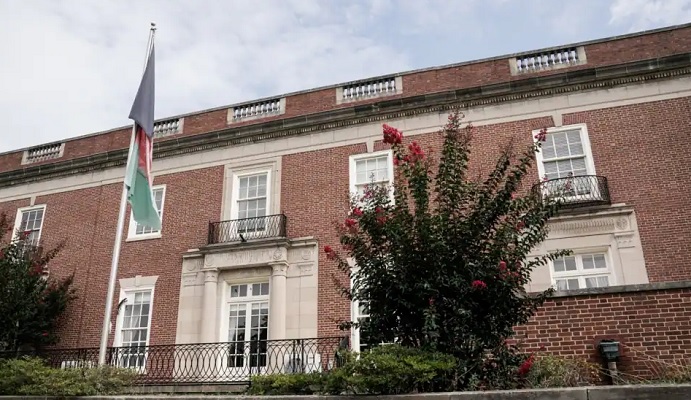
By: Humayoon Babur
Date: Oct.1, 2018
The Amu Darya river, historically known as Oxus, crosses Imam Sahib District of Kunduz province in the northeast of Afghanistan bordering with Tajikistan. Until recently, the Amu Darya water reached the Aral Sea, but now the water is diverted for agriculture purpose, keeping the streams from reaching its end point.
Sher Khan trading port, a strategic and significant route to central Asia is also located in Imam Sahib District. Large swaths of lands are fertile due to the abundance of water that reaches the location throughout the year. There has not been a single drought on record in the region in recent memory.
Extreme weather and climate change are now a fact of life in the region and is becoming noticeable. Due to early snowmelt in the highlands, particularly the glaciers, which are located in the Hindu Kush Mountains of Badakhshan province of Afghanistan, the early melting of glaciers is negatively, affecting the livelihood of locals in Imam Sahib District.
The recent extreme change in weather is financially affecting at least 204,300 inhabitants’ as well as their quality of life in Imam Sahib. Many have decided to leave the region.
The climate change efforts have needed collective action because the phenomenon has become a real and present danger across Afghanistan.
In 2018, a joint survey which was carried out by the Central Statistics Organization (CSO) and ICON International illustrates that almost 54 percent of the population in Afghanistan live below the poverty line. This number increases to 67 percent in the winter months where jobs become more scares and the cost of living and heating bring extra difficulties to those already living precarious lives.
“According to calculations, if a person spends less than 2,064 in a month, then he lives below the poverty line, this is the rational explanation,” said Haseebullah Mawahid, Technical Deputy Head of CSO.
Kunduz is known as ‘Afghanistan’s reservoirs of grains’. In particular, the Imam Sahib region is a significant driver of the agricultural sector. According to the Ministry of Agriculture, Irrigation, and Livestock (MAIL), approximately. 65 percent of the Afghan populations rely on agriculture.
Imam Sahib, Known as an Agricultural-dominate district, provides various agricultural crops, fruits, and vegetation. Now, it seems the district is gradually disappearing because of water intrusion into cultivating areas. This has produced a disaster in the areas, forcing locals to evacuate without contingency plans.
Afghanistan is already facing tremendous flows of Internally Displaced persons (IDPs), if not curbed on time; it could be another catastrophe for a fragile state.
Due to little or no attention of the central government, the problem is increasing year by year. The efforts being made by the government are only temporary efforts, which do not do enough to curb the challenge.
It’s clear that water erosion is a part of the complex denudation of the earth’s surface, therefore; it has affected the range of soil day-to-day, as consequently, it has washed out agriculture, livestock and residential areas.
The looming plague had begun years ago, due to the poor performance of government institutions and has been exacerbated by decade’s long protracted armed-conflict which has also added to the recent calamity. It is likely, many infrastructures including agriculture and irrigation systems, will remain or become crippled and paralyzed.
“If the current circumstance keeps going on, we should expect that one day the entire area will become a river [Disappeared] cause of water and storm surge of the Amu Darya.” says, Mahboobullah Saeedi, district governor of Imam Sahib District. “Thousands of hectors of fertile lands, cemetery, schools, and mosques have been drowned, which is unbelievable at all,” Saeedi adds.
Gul Ahmad Nabi, 49, farmer and a resident of Orta Boz village of Imam Sahib District, to him the lands remained from ancestors, quite recently, he lost a lagoon of fish, livestock and agriculture, according to him all disappeared with nothing left. “On a dark night, we were forced to evacuate with absolutely nothing but the heads on our shoulders. Everything was left and could not be saved because the flood waters pouring into our rooms.”
Nabi added. “Were skeptical to see any swift solutions to end the challenge; roads have washed away, houses and mosques have been destroyed and the Sher Khan port is also facing water threat.” Furthermore, he added, “Officials do not listen to our voice, this river has landed 3,000 acres of agriculture, the government promises but does not serve, we want to resolve our problems… it is time to mitigate.”
Over Decades, Still Scant Mitigation to Climate Change
By now it is clear that the National Unity Government did not fulfill the pledge to manage natural resources, specifically the water resources with neighboring countries. Afghan President Ashraf Ghani said: “proper management of water will decrease poverty, grow Agriculture, industry and ensure energy sustainable development of Afghanistan.”
The majority of dwellers in Imam Sahib district believe that the basic underlying structural measurements needed to avoid recent problems has not been done in over a decade, and this negligence has direct consequences to the reduced preparedness of the impact of climate change on Imam Sahib District of Kunduz province.
Local authorities in Kunduz also accepted the challenge and assert that the Control of Amu Darya’s has needed collective endeavors where, recently, the river is threatening thousands of agricultural lands and residents properties.
In regard, Mohammad Yousuf Ayubi, the head of provincial council tells”Due to security reason access to accurate data it’s impossible, therefore, can’t judge over the situation–government cannot go there because of the existence of armed-opposition,” Ayubi added. ”The ongoing condition is as an extremely serious hazard for the inhabitants of Imam Sahib.”
Nevertheless, neighboring countries such as; Tajikistan, Uzbekistan, and Turkmenistan recently did protection structures over the Amu Darya to protect their lands. Their actions have created more difficulty to Afghan’s side. As the country depends on foreign aid over the last 17 years, the protection of the Imam Sahib District will need billions of dollars.
According to Mohammad Naeem Nawabi, General Director of Punj Amu Darya in Kunduz, scant and temporary efforts have been continuing, however, the underlying protection needs a large amount of Money. ”If we build at least 12 Kilometers protection gabion walls it will cost $ 4 billion which is hard at the moment,” he added. ”Amu Darya has swallowed at least 50,000 hectares lands of Imam Sahib District.”






